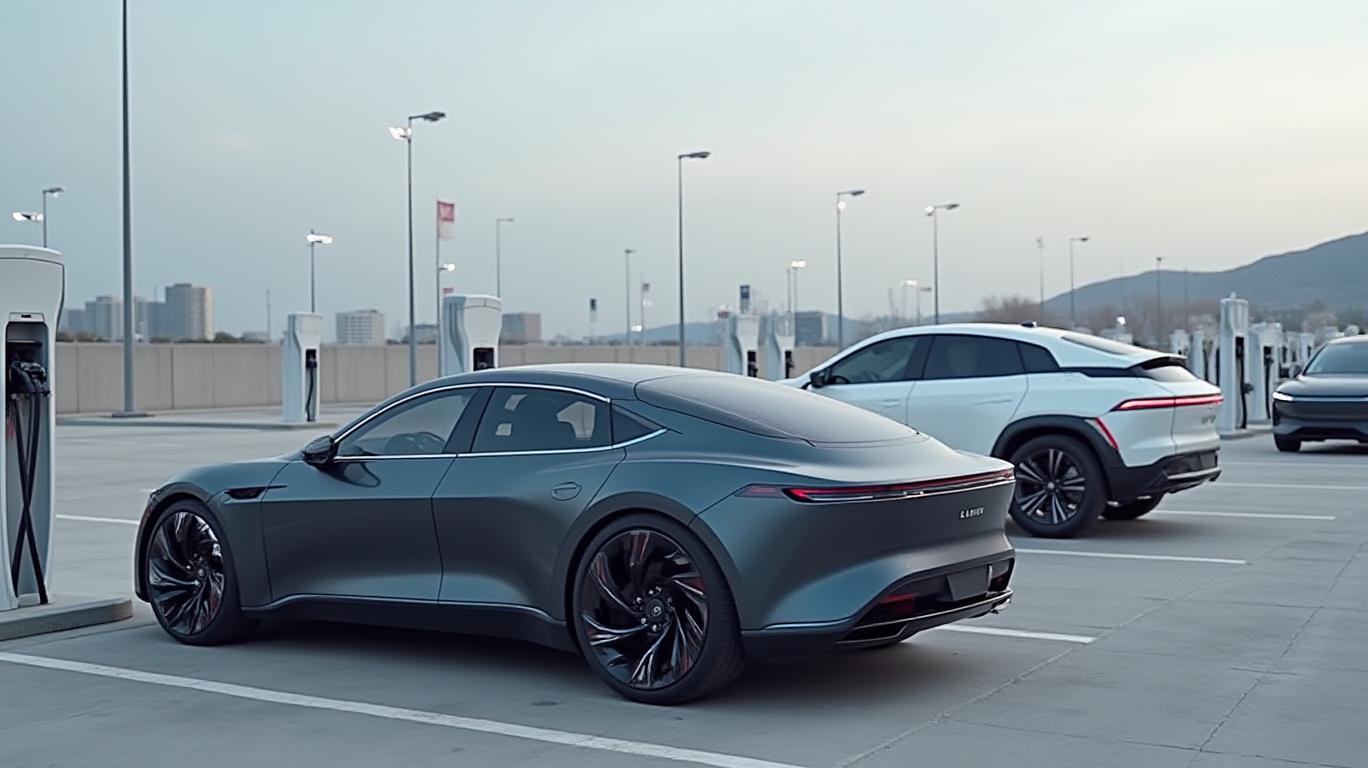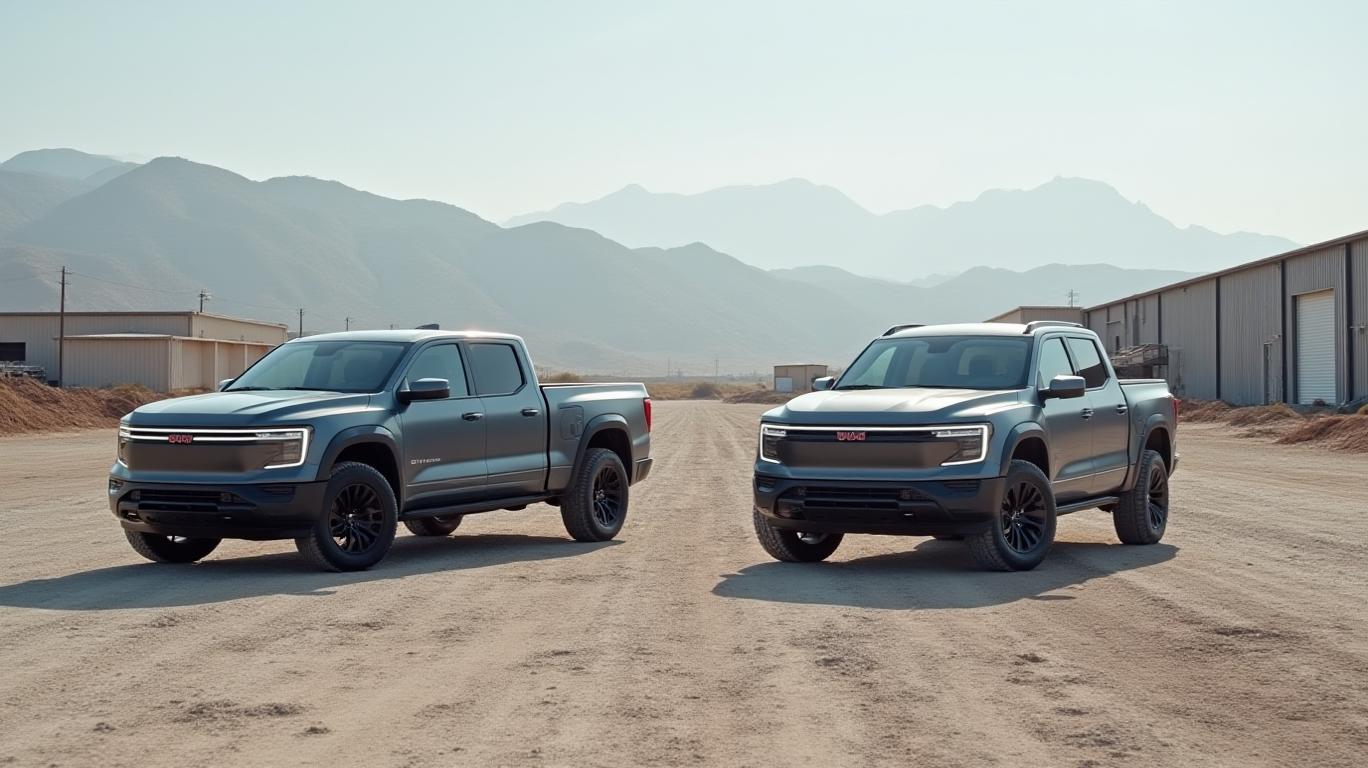Rivian (RIVN) vs. Lucid (LCID): Why Cramer’s Call Signals a Rivian Turnaround in EVs
The electric vehicle (EV) sector is in a state of flux, with rising tariffs, shifting consumer demand, and relentless competition reshaping the playing field. Among the contenders, Rivian (RIVN) and Lucid (LCID) have emerged as focal points for investors—yet their divergent Q1 2025 results and strategic trajectories tell a stark story. Jim Cramer’s recent endorsement of Rivian over Lucid underscores a critical shift in how to bet on EVs: operational execution and margin resilience, not just premium branding, will define winners. Here’s why investors should prioritize Rivian for long-term growth—and why Lucid’s near-term stumble matters.
Lucid’s Q1 Miss: A Warning for Premium EV Plays
Lucid’s Q1 2025 revenue of $235 million fell short of the $237.1 million analyst consensus, a miss magnified by its 8%-15% gross margin headwinds from U.S. tariffs. While deliveries surged 58% year-over-year to 3,109 vehicles, production lagged at 2,212 units—excluding 600 units held for Saudi factory validation. The problem? Lucid’s reliance on high-end models like the Lucid Air and Gravity leaves it vulnerable to price-sensitive markets and supply chain bottlenecks.

Lucid’s liquidity ($5.76 billion) buys time, but its non-GAAP net loss of $619.76 million for the quarter signals a prolonged path to profitability. With analysts trimming 2025 revenue estimates by 5%, the stock’s YTD drop of 23% reflects skepticism over its ability to scale without sacrificing margins.
Rivian’s Turnaround: Gross Profit, Partnerships, and a Supplier Play
Rivian, meanwhile, delivered a $1.2 billion revenue beat against $997.7 million estimates, marking its second consecutive quarter of gross profit ($206 million). The key? A strategic pivot:
- Tariff Mitigation: Rivian’s $120 million investment in an Illinois supplier park localizes critical parts production, reducing reliance on imported components hit by tariffs. This contrasts sharply with Lucid’s passive stance on supply chain costs.
- Partnership Power: A $1 billion Volkswagen investment for R2 model development and factory expansions unlocked milestone payments, boosting liquidity.
- Cost Discipline: Rivian narrowed its adjusted loss to $0.48 per share (vs. a $0.92 estimate), while its current ratio of 3.7 signals stronger balance sheet resilience than Lucid’s leveraged growth model.
Cramer’s call to favor Rivian hinges on its mass-market strategy. The upcoming R2, R3, and R3X models (priced under $50,000) target a broader audience than Lucid’s luxury niche—a move analysts project could drive 39% revenue growth in 2026.
Cramer’s Rationale: Why Rivian Wins the EV Long Game
Jim Cramer’s skepticism of Lucid and bullishness on Rivian boils down to three factors:
- Execution Over Hype: Rivian’s gross profit milestones and delivery of $1 billion in VW payments prove it can monetize partnerships, whereas Lucid’s delays in Saudi factory ramp-up raise doubts.
- Margin Trajectory: While both face tariff pressures, Rivian’s gross margin improvement (to -294% operating margin from -423% YoY) outpaces Lucid’s stagnant margins.
- Valuation Clarity: Rivian trades at 14x forward EV/Sales, versus Lucid’s 35x, despite Lucid’s smaller revenue base. Cramer’s “buy” stance on Rivian reflects its undervalued potential.

Investment Thesis: Rivian’s Time to Shine
The EV sector’s next phase isn’t about exclusivity—it’s about cost control, scalability, and market reach. Rivian’s moves to localize supply chains, partner with VW, and pivot to affordable models position it to dominate post-2026. Even its Q1 delivery cut (to 40K–46K units) is a calculated response to macro risks, not a failure.
Lucid, while financially stable, faces a ceiling: its premium model strategy struggles in a cost-conscious era, and its margin erosion risks outpacing revenue growth.
Act now: Buy RIVN near $15–$16, targeting a $25 price target by 2026. Lucid’s stock may rebound short-term, but its valuation and margin risks make it a speculative bet. Cramer’s call isn’t just a preference—it’s a roadmap for EV investors to prioritize execution over aspiration.
The EV race is far from over. But with Rivian’s operational wins and strategic foresight, the finish line is in sight—and it’s not for the luxury players.
Ruth Simon is a pseudonym for an analyst specializing in EV sector dynamics. This article is for informational purposes only and not financial advice.

Comments
No comments yet